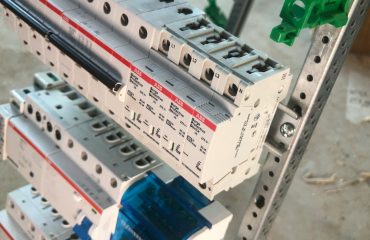body {
font-family: sans-serif;
line-height: 1.6;
}
h1, h2, h3 {
color: #333;
}
The steel industry, a cornerstone of global infrastructure, is undergoing a significant transformation, driven by a growing emphasis on sustainability. At the heart of this change lies steel recycling, a process that’s not just environmentally responsible but also economically advantageous. This post delves into the multifaceted world of steel recycling, exploring its significance, processes, challenges, and future prospects.
The Environmental Imperative: Why Recycle Steel?
Steel production is an energy-intensive process, relying heavily on the extraction and processing of iron ore. This process contributes significantly to greenhouse gas emissions, impacting climate change. Recycling steel, on the other hand, drastically reduces this environmental footprint. Producing steel from scrap requires significantly less energy – estimates suggest up to 75% less energy compared to using virgin materials. This translates to a substantial reduction in carbon emissions, making it a crucial strategy in mitigating climate change. Furthermore, recycling steel conserves natural resources, reducing the demand for mining and the associated land degradation, habitat destruction, and water pollution. By diverting steel scrap from landfills, we also prevent the release of harmful pollutants into the environment.
The Economic Advantages of Steel Recycling
Beyond the environmental benefits, steel recycling offers substantial economic advantages. The cost of producing steel from scrap is considerably lower than using iron ore. This price advantage makes recycled steel a competitive and attractive option for steel manufacturers, leading to cost savings throughout the supply chain. The economic benefits extend beyond the production process. A robust steel recycling infrastructure creates jobs in collection, processing, and transportation, stimulating economic growth in local communities. Government incentives and policies further support the economic viability of steel recycling, encouraging greater investment and participation in the industry.
The Recycling Process: From Scrap to Steel
The steel recycling process involves several key steps. First, scrap steel is collected from various sources, including demolition sites, manufacturing facilities, and households. This scrap is then sorted and processed to remove contaminants such as non-ferrous metals, plastics, and other impurities. The cleaned scrap is then transported to steel mills, where it’s melted down in electric arc furnaces (EAFs) – the primary method for steel recycling. EAFs use electric arcs to generate the intense heat required to melt the steel scrap. The molten steel is then refined to meet specific quality requirements before being cast into various forms, ready for use in a vast array of applications.
Technological Advancements in Steel Recycling
The steel recycling industry is constantly evolving, incorporating advanced technologies to enhance efficiency and sustainability. Developments in sensor technology and automation are improving the sorting and processing of scrap steel, leading to higher purity and yield. Research into new furnace designs and energy-efficient melting technologies is reducing energy consumption and emissions. Furthermore, advancements in material science are enabling the recycling of more complex steel alloys, expanding the scope of recyclable materials. These technological innovations are crucial for maximizing the environmental and economic benefits of steel recycling and ensuring its continued growth.
Challenges and Future Outlook for Steel Recycling
Despite its numerous advantages, steel recycling faces certain challenges. The inconsistent quality of scrap steel can affect the final product’s properties. Contamination in the scrap stream can also pose problems, requiring careful processing and quality control measures. Improving the efficiency of scrap collection and transportation networks is crucial to ensuring a steady supply of recyclable material. Furthermore, addressing the issue of end-of-life products and managing the recycling of complex steel alloys remains a significant challenge. However, the future outlook for steel recycling is positive, driven by increasing environmental awareness, stricter regulations, and technological advancements. Collaboration between industry stakeholders, governments, and research institutions is vital to overcoming these challenges and maximizing the potential of steel recycling for a more sustainable future.
In conclusion, steel recycling plays a vital role in the transition towards a circular economy, offering significant environmental and economic benefits. By addressing the existing challenges and embracing technological advancements, the steel industry can further enhance the efficiency and sustainability of its recycling processes, contributing significantly to a greener and more resource-efficient future.
SEO Tags: Steel Recycling, Recycling Steel, Sustainable Steel, Electric Arc Furnace, Circular Economy




